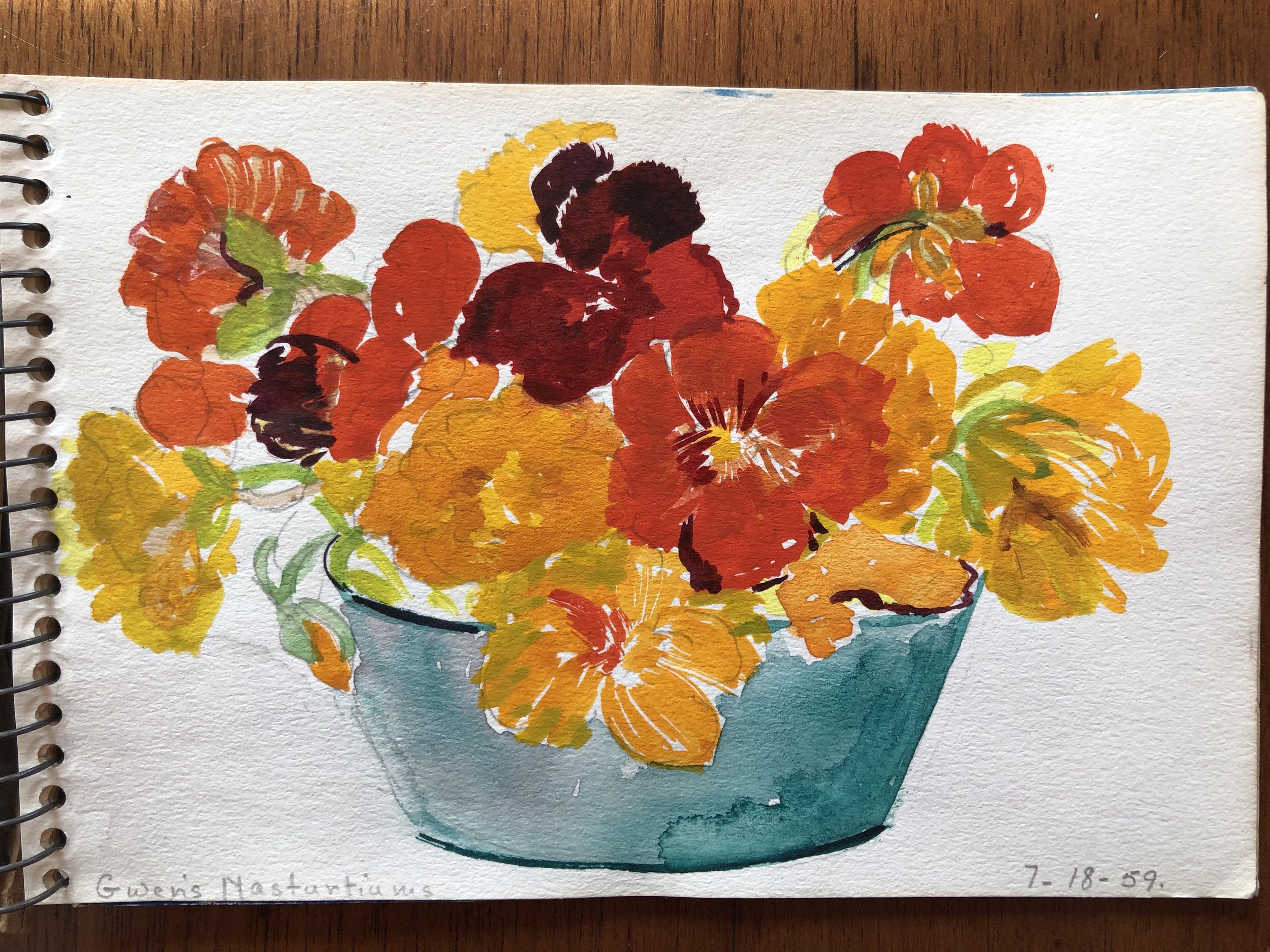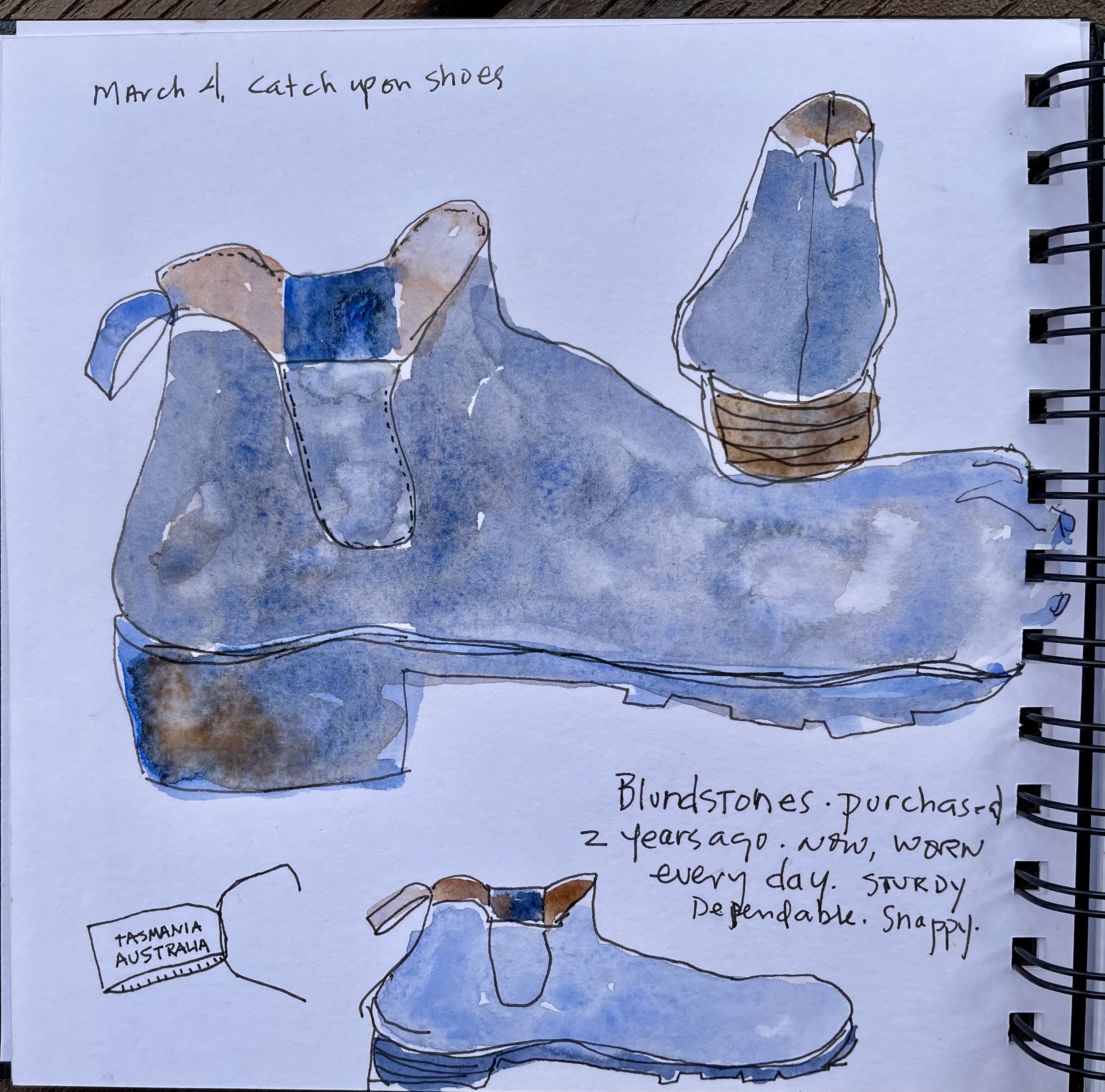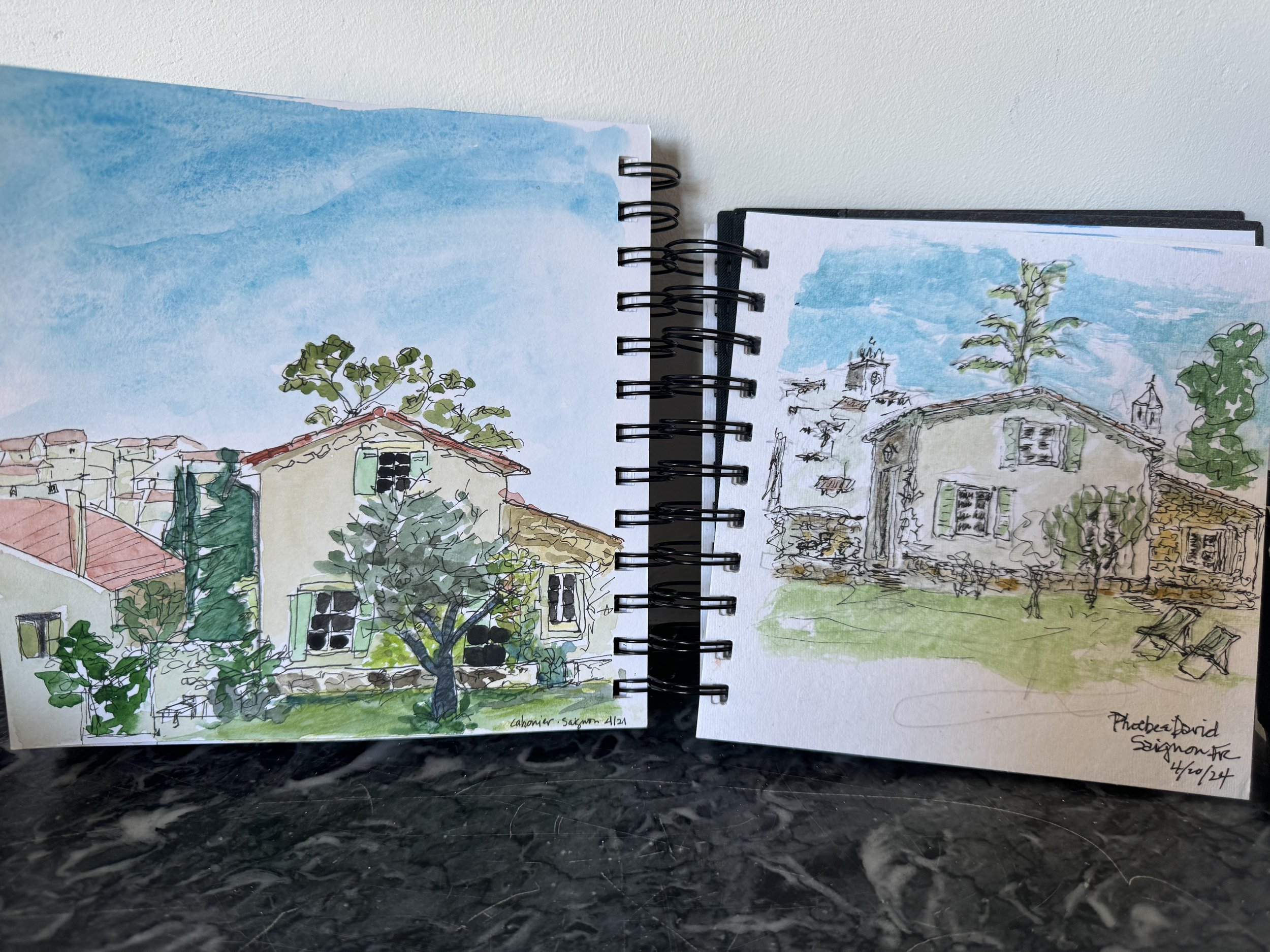From my mother’s sketchbook, July 18, 1959
I grew up with a mother who loved to draw and paint. She always had materials for me also, including a sketchbook. We drew and painted together often, especially in the summers when we escaped the heat of the midwest for the coast of Maine. My mother kept sketchbooks when she traveled. The little vase of nasturtiums above was painted 65 years ago today!
I was influenced by Frederick Franck who wrote The Zen of Seeing: Seeing/Drawing as Meditation, and Clare Walker Leslie, author of Keeping a Nature Journal. Together they helped me discover that drawing what we see and where we are is a practice that brings us into the present completely, and leads us to settle in and notice details, patterns, and miracles of life right in front of our nose.
On Puerto Rico’s island of Culebra
This practice takes us out of our endless thoughts and preoccupations. I love what artist, Hannah Sessions says about sketching as a daily practice. “Regardless of how I might be feeling about my circumstance, or myself, the question is asked again and again…what is being seen? What is being known? Daily informal sketching prompts noticing and noticing is a way out of self.”
I have brought drawing to almost all the teachers we have worked with other the years. I want them to open to the power, pleasure, and learning that comes with this practice. I want them to offer this world to their students in a way that enhances and enriches almost any subject area. Drawing opens up a whole world and way of seeing and being that is truly a gift.
Drawing birds during Covid lockdown
Amy Tan, author of The Backyard Bird Chronicles says, You learn to carry a little sketchbook with a little pencil in your pocket or your bag and you notice something and you just do it. You make a little note and you do a little drawing and you’ve just saved that day for the future. I love that.
Last March I took an online course with Vermont artist, Susan Abbott, Traveling with your Sketchbook.
I was inspired by a book that she wrote entitled An Artist’s Pilgrimage, about her walk on the Camino de Santiago from France to Spain. Her book is filled with her sketches and watercolors made along the way. During the the course I took with her, she said,
Drawing is a gift to yourself. You create a narrative of your thoughts, feelings, sensations…You absorb an experience in a way that you don’t otherwise. Looking at your sketchbook takes your right back to your experience. You have to do it to learn it. Any way that you do it is good.
One of Susan Abbott’s homework assignments: draw a favorite shoe
Susan Abbott challenged us to make quick drawings and add color at home. She also challenged us to draw people and to sometimes have more than one vignette on a page.
Ashley and I were lucky enough to spend most of last April in the Luberon region of France. Often Ashley and I would stop in our explorations of villages and decide to draw the same view. In the sketches below, we were in the town of Cucuron on bikes that we had rented.
A street in Cucuron, France, by Louise and Ashley
If you haven’t yet, do what Amy Tan suggests. Put a little notebook and a pencil and pen in you bag and notice the beautiful summer world around us. It will take you out of worrying about our challenging world and bring you into the present.
Frederick Frank wrrote:
What I have not drawn, I have never really seen. Once you start drawing an ordinary thing, a flower, a leaf, a face, you realize how extraordinary it is. While I draw, I keep the eyes focused and allow the pencil to follow what the eye perceives. Don’t let your eye wander from what it is seeing and keep your pencil moving on the paper. Feel that with the point of the pencil you are caressing the contours and circumference of the leaf in front of you. Just let your hand move.
This is all you need for instructions to get started.
In her book, An Artist’s Pilgrimage, Susan Abbott writes:
The loveliness of this countryside keeps slowing me down. And finally forces me to stop and take a longer look. Bushes tinted alizarin crimson, white clouds of wild apple trees, celadon green fields. I take off my pack and pull out sketchbook and pens.
Stand still on the gravel path, draw this April morning. Fix it in heart and memory.
Phoebe’s cabanon in Saignon, France by Louise and Ashley






